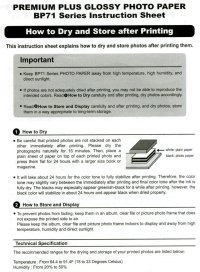Here's the thing. In the real world pigment inks even aftermarket ones far outperform dye inks even OEM. That indicates that for many situations the test performed by the above outfit leaves a lot of real world issues out. I can point out a flaw in the process that parallels a flaw NASA made and subsequently discovered in the 60s in simulating aging but I won't open up a can of worms. ( Here's a hint, fading occurs at the electron level and involves energy levels. Can we get a "soft" action in that process. What happens when you increase the energy levels... is the effect proportional?)
In nearly 20 years of using aftermarket pigment inks, I know of really no one who has been disappointed and never had to address any issues in that area. That to me is the real world. I always recommend using pigment inks when fade is a concern and with printers that can output prints that can come close to the best dye ink printers,
Go with a pigment ink printer that uses CO or GLOP and most will be pleased.
Back in the 70s according to all tests performed to that date indicated all amplifiers should sound the same when they showed the same results in the tests. They did not. The tests performed were inadequate. Pity those thinking the tests were correct because the tests omitted many issues not yet uncovered. That is science. Once you discover facts that do not track the tests, you need to question the test and its validity and start over again with newer and more sophisticated testing. Otherwise you MUST warn the viewer of the limitations of the tests performed.
In nearly 20 years of using aftermarket pigment inks, I know of really no one who has been disappointed and never had to address any issues in that area. That to me is the real world. I always recommend using pigment inks when fade is a concern and with printers that can output prints that can come close to the best dye ink printers,
Go with a pigment ink printer that uses CO or GLOP and most will be pleased.
Back in the 70s according to all tests performed to that date indicated all amplifiers should sound the same when they showed the same results in the tests. They did not. The tests performed were inadequate. Pity those thinking the tests were correct because the tests omitted many issues not yet uncovered. That is science. Once you discover facts that do not track the tests, you need to question the test and its validity and start over again with newer and more sophisticated testing. Otherwise you MUST warn the viewer of the limitations of the tests performed.
Last edited:

